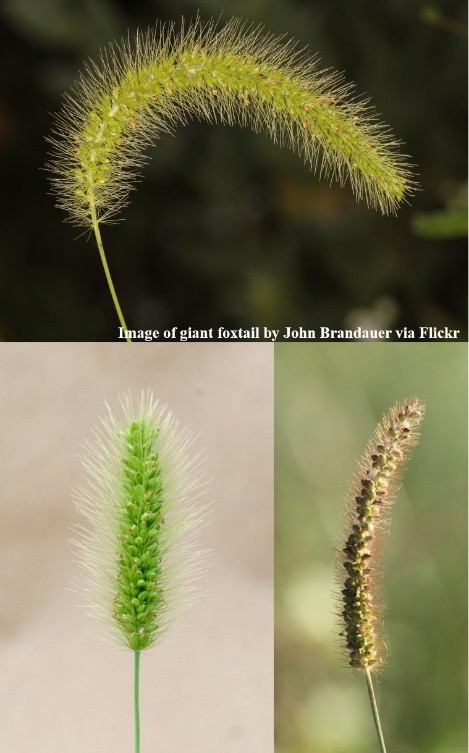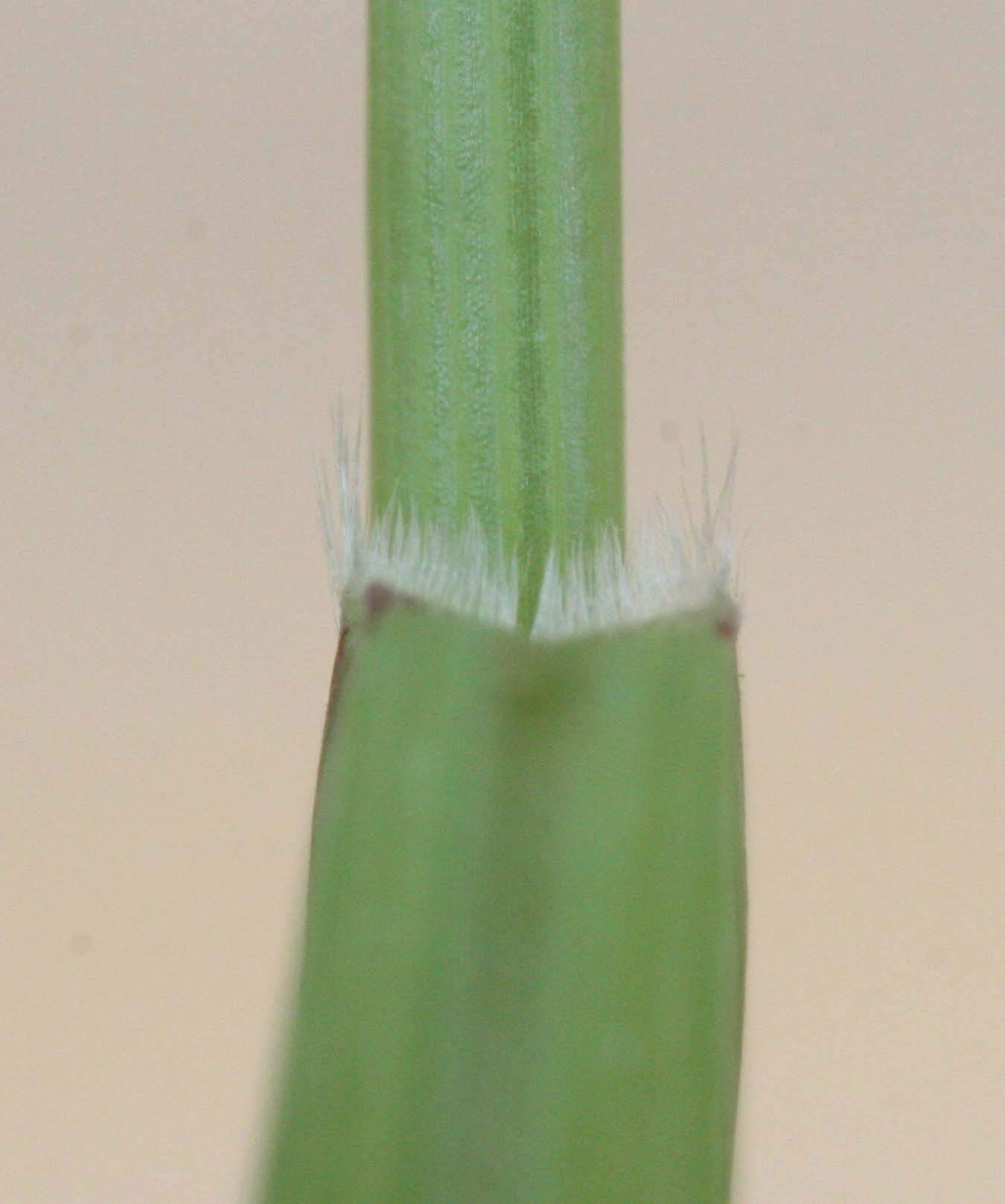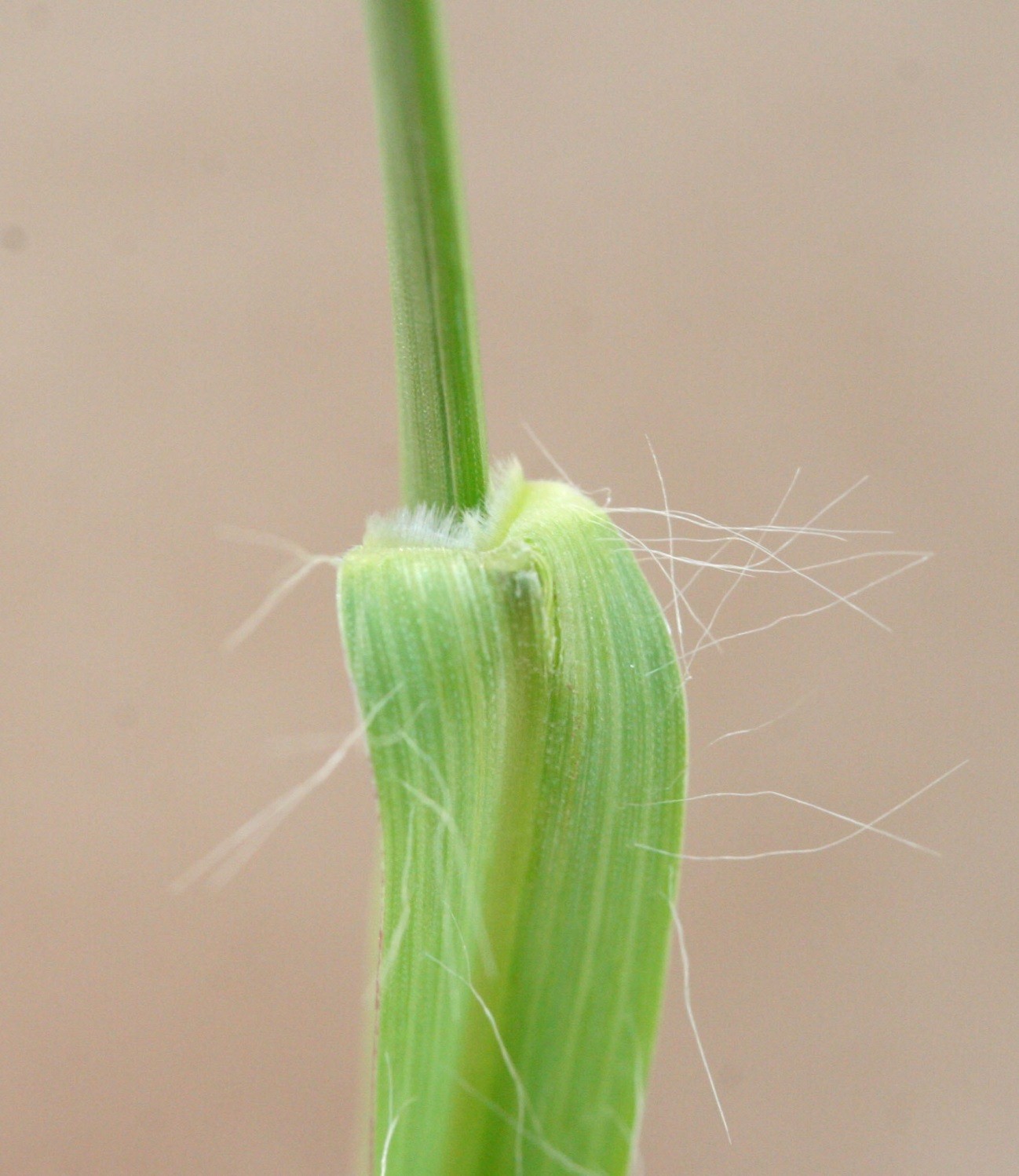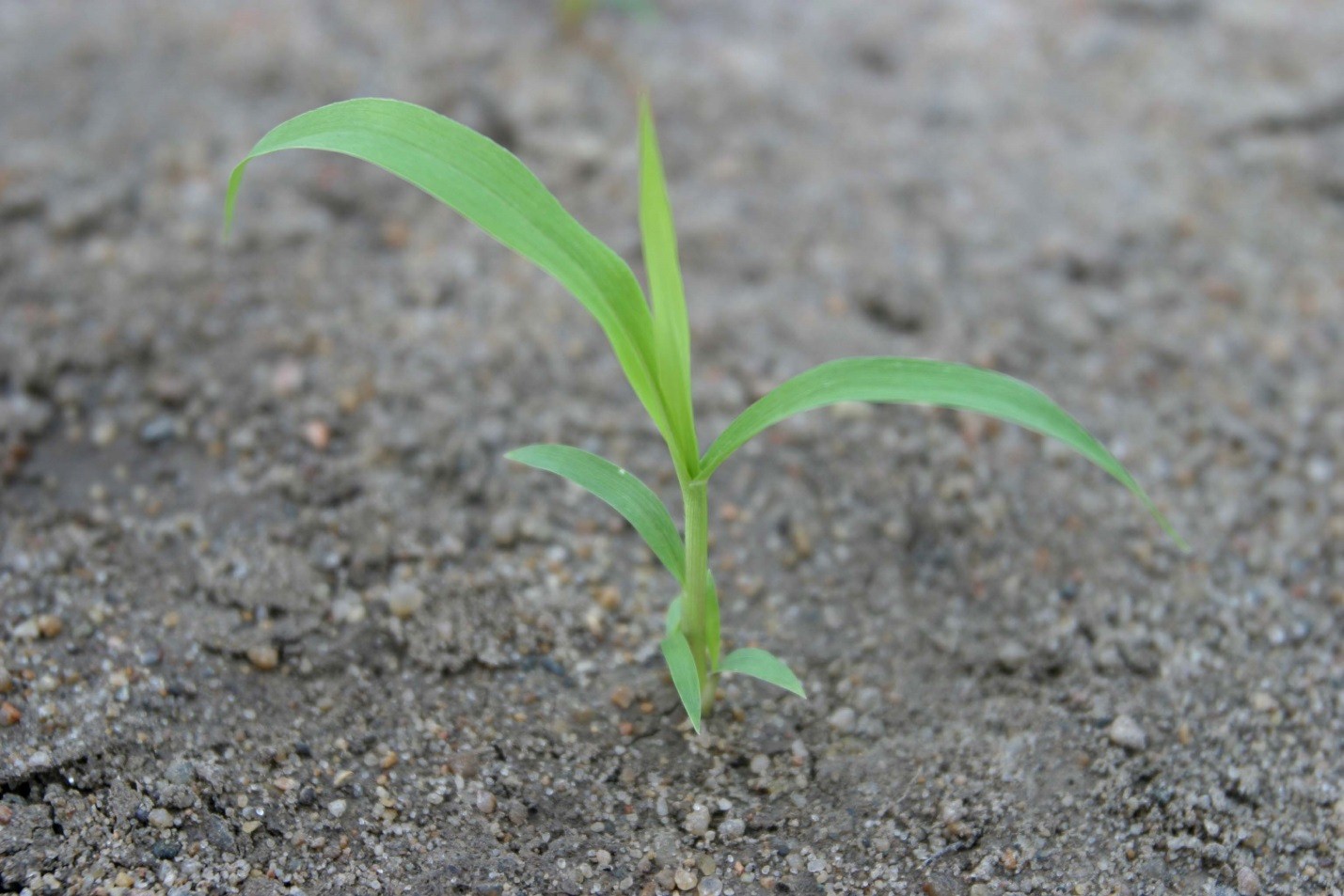By Mandy Bish, Kevin Bradley
 Figure 1. The seed heads of giant (top), green (lower left), and yellow (lower right) foxtails. The giant foxtail seed head drops while the seed heads of the green and yellow. |
May 19, 2014 — The three most common foxtails in Missouri are yellow, green, and giant foxtail. These grasses, which invade fields of row crops and pastures across the U.S., begin germinating in late spring to early summer, and have many similar characteristics. All three have fibrous root systems, reproduce by seed, and form that distinctive, fuzzy, foxtail seed head (Figure 1). Each tends to grow upright and has a ligule that is a fringe of hairs at the junction where the leaf blade meets the stem (Figure 2).
These properties can help distinguish the foxtails from many other common grassy weeds, which may have no ligules present or have ligules that are membranous with no hair. And while the three foxtails can be challenging to differentiate from one another, they each have unique properties that can aid in foxtail identification.
One of the most distinguishing features of the foxtails is the color and size of the fuzzy foxtail seed heads (Figure 1). Yellow foxtail has a compact seed head with soft, yellow bristles (or awns) while the seed head on green foxtail is usually green or purple-tinted. Giant foxtail seed heads are also greenish in color, but are usually larger, about 3 to 8 inches long, and the seed heads of giant foxtail also droop in an arch shape unlike the more erect seed heads of green and yellow foxtail.
 Figure 2. A ligule is a thin membranous sheath that occurs at the junction between the leaf and stem. The foxtails all have a ligule that is hair-like. |
Knowing the differences between the seed heads is useful, if the seed heads have already formed. But what about the earlier growth stages? There are a few key but subtle features that you can look for when identifying foxtails prior to seed head formation.
The leaves also help to differentiate the foxtail species. Giant foxtail tends to have wider leaves (~3/8 to 5/8 inch) and dense hair growing on the upper surfaces of the leaves. Both green and yellow foxtails have narrower leaf blades (~1/8 to 3/8 inch wide). Green foxtail has a smooth upper leaf surface with no hairs, while yellow foxtail has sparse hairs on the upper leaf surface. These hairs grow up to 3/8 inch long, are light yellow/white and cobweb-like, and are located near the base where the leaf meets the stem (Figure 3).
 Figure 3. Yellow foxtail is easily distinguished from giant and green foxtail by the presence of long, cobweb-like hairs in the collar region. |
In addition to the leaves, the leaf sheaths, or stems, are also different. Yellow foxtail has flat leaf sheaths with a reddish tint at the base. Green foxtail and giant foxtail both have round leaf sheaths. The leaf sheath of green foxtail is usually lined with small hairs while that of giant foxtail is smooth.
For information on herbicides that provide effective control of the foxtails, purchase or download a copy of M171, the Missouri Pest Management Guide: weedscience.missouri.edu/
publications/m00171.pdf
And for more information on the identification of foxtails and other grass weeds in Missouri, purchase or download a copy of:
IPM1007, Practical Weed Science for the Field Scout: http://weedscience.missouri.edu/publications/ipm1007.pdf
 or IPM1024, Identifying Grass Seedlings: http://weedscience.missouri.edu/publications/ipm1024.pdf
 Figure 4. Foxtail seedlings, like the one pictured, are emerging in fields throughout Missouri. |






Post a comment
Report Abusive Comment